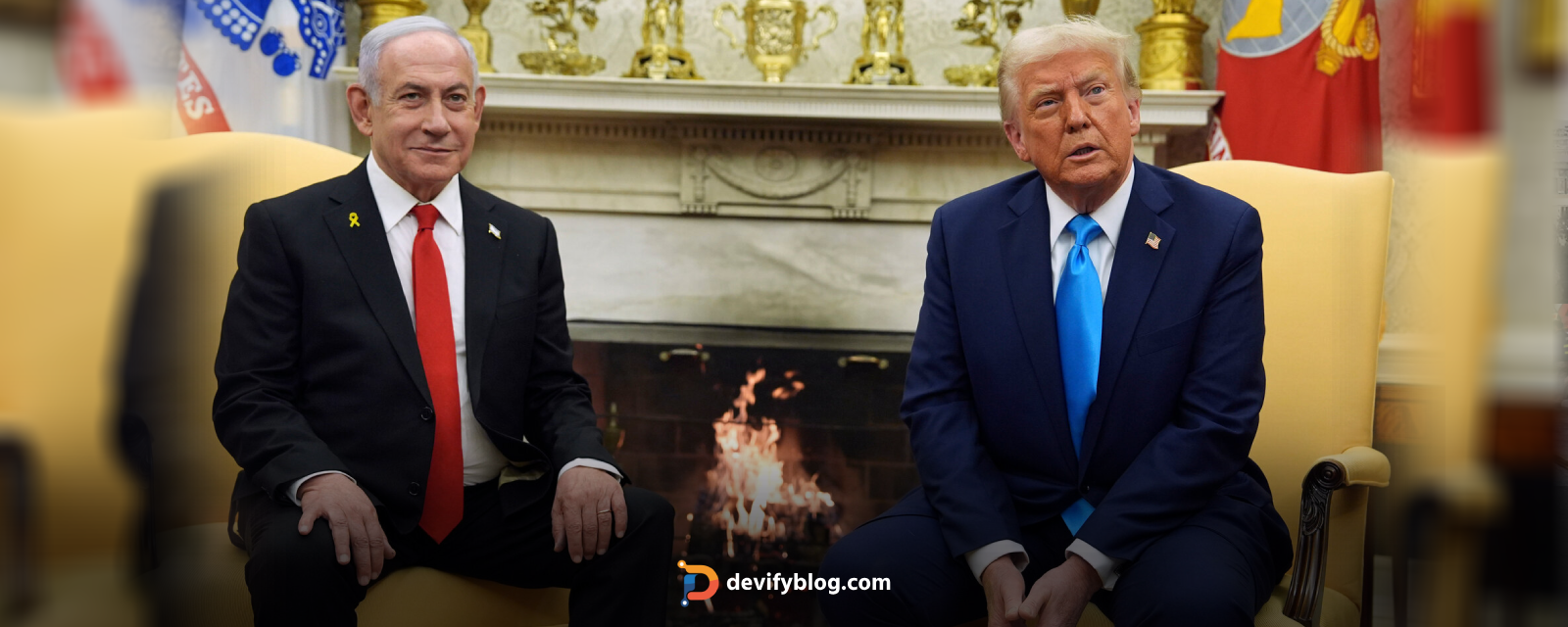- On July 7, Trump invited Netanyahu to Washington to talk about bringing the war in Gaza to a stop and releasing the hostages.
- A 60-day truce in which Israel will withdraw and let humanitarian relief, and Hamas will free hostages.
- Although Israel has consented, Hamas demands more robust guarantees.
- Will Israel pull out completely? Is Hamas going to disarm? Will there be enduring peace as a result?
- 1,700 Israelis and more than 57,000 Palestinians have lost their lives thus far. A ceasefire might prevent more deaths.
U.S. President Donald Trump and Israeli Prime Minister Benjamin Netanyahu will meet in the White House on July 7, 2025. This meeting's primary goal is to advance the planned 60-day truce in the Gaza Strip. A deal in which the militant organization Hamas would free Israeli hostages in exchange for a brief cessation of hostilities is part of this strategy. Ending the current conflict and ensuring the safe return of all remaining hostages are President Trump's top priorities. The purpose of the meeting is to ratify the truce's essential provisions, which would permit humanitarian aid to enter Gaza and pave the door for larger regional peace initiatives.
The conflict between Israel and Hamas would temporarily stop as part of the planned 60-day truce arrangement. Hamas is anticipated to free hostages in segments during this time, beginning with the 10 Israeli prisoners who are still alive and the 18 who have been officially declared dead. Additional hostages will be released in later stages of the arrangement. Israel would create buffer zones to lessen direct conflict and tension in exchange for the withdrawal of Israeli forces from Gaza's heavily populated regions. Additionally, this would make it possible for the United Nations and the Palestinian Red Crescent to oversee and provide essential humanitarian relief into Gaza. President Trump has personally pledged to oversee the process to make sure both parties adhere to the agreement, and he has stated that the United States will hold Israel responsible for all of the conditions specified throughout the ceasefire time.
Current Status of Negotiations
Israel has formally accepted the ceasefire proposal, committing to the conditions set forth by the US, which include letting humanitarian aid into Gaza, releasing hostages, and withdrawing troops. Hamas, on the other hand, has expressed interest in the truce and replied favorably to the plan through mediators from Egypt and Qatar. But Hamas has also expressed misgivings and called for more robust assurances, including that Israeli forces will completely evacuate strategic parts of Gaza and that the truce will ultimately result in a genuine peace deal rather than merely a short-term one. Some significant concerns are still unresolved even if both parties have shown willingness. These include the precise timing and extent of Israel's troop withdrawal, who will oversee vital border crossings like Rafah, and how humanitarian relief will be safely delivered. More conversations are required to settle these issues, which are still delaying the final agreement.
Since it started on October 7, 2023, the war in Gaza has already claimed the lives of about 57,000 Palestinians and about 1,700 Israelis.
Short-term truces have failed before, analysts caution. They wonder if Hamas will consent to future disarmament or if Israel will completely depart as promised.
Hamas demands must be fulfilled, and Netanyahu is under pressure from far-right members of his government. Public demonstrations in Israel, meantime, call for the end of the conflict and the release of the hostages.




Login to leave a comment.